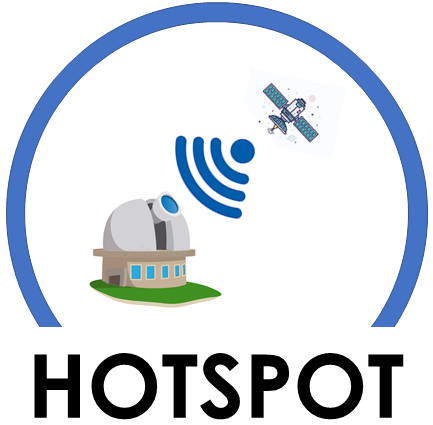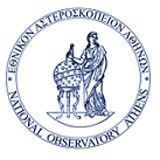
-
StatusOngoing
-
Status date2022-11-21
-
Activity Code6C.031

Project HOTSPOT aims to identify all possible activities that can be carried out at Helmos observatory in Greece concerning optical, quantum, and deep space communications.
Optical communications are expected to increase the data-rates up to a factor of 100 compared with the existing RF technology. This technology is ideal for satellites since it consumes less power, needs less space and devices are less massive. Furthermore, laser communications do not suffer from interference, like RF links do, given the very concentrated laser beams compared to RF. Helmos Observatory can be transformed into an ideal test-bed facility for performing optical communication link experiments.
The facilities at Helmos Observatory can be used to perform various experiments in the field of optical communications. The large aperture combined with excellent atmospheric seeing conditions of the site, makes the Aristarchos telescope a valuable asset for optical and quantum communications, and is especially suited for lunar, Lagrange orbit and deep space optical communications (DSOC).
Helmos Observatory belongs to the National Observatory of Athens (NOA) and is operated by the Institute for Astronomy, Astrophysics, Space Applications and Remote Sensing (IAASARS). The Observatory hosts Aristarchos, an optical telescope with a 2.3 m diameter aperture and a focal length of 17.8 m. Helmos Observatory (Aristarchos telescope) was selected in August 2020 to become the first optical ground station (OGS) of the ScyLight program of the European Space Agency (ESA). Project HOTSPOT aims to identify all possible activities that can be carried out at Helmos observatory in Greece concerning optical, quantum, and deep space communications.
The work breakdown is based on four Work Packages (WP). OGS equipment reception and inventory update will be the content of WP1. It will deal with the preparatory work aiming at preparing the Helmos OGS for accepting equipment (hardware/software) which are being developed and also consolidate missing items that are required either for the current setup or for future activities (such as QKD and DSOC). WP2 deals with the equipment installation and familiarisation. Satellite operation campaigns will be the content of WP3. It will deal with the satellite test operational campaigns, including resolving safety regulations, planning of the campaigns, and execution of test campaigns. Finally, WP4 deals with the managerial aspects of the whole project.
Four milestones (MS) are foreseen during the course of the project. The identification of new equipment to be placed at the OGS is the subject of WP1 and the acceptance review (MS1). The review of operational readiness (MS2) concerns the development of operation manuals and a test planning schedule. The development of the operational procedure and test plan, along with satellite operations tests are the subject of MS3. The activities of the project are presented in the final review (MS4).
Helmos Observatory was selected by ESA to become the first OGS to operate under the ScyLight framework. During the last period, NOA staff have been working in close collaboration with ESA to develop the necessary equipment and to upgrade the 2.3 m Aristarchos telescope for optical communication activities. The instrumentation that has already been developed needs to be installed and properly tested before it can be used for satellite operation campaigns. Furthermore, missing items for further developments (e.g. for Quantum Communication, Deep Space Optical Communication) need to be identified and listed for future developments.



